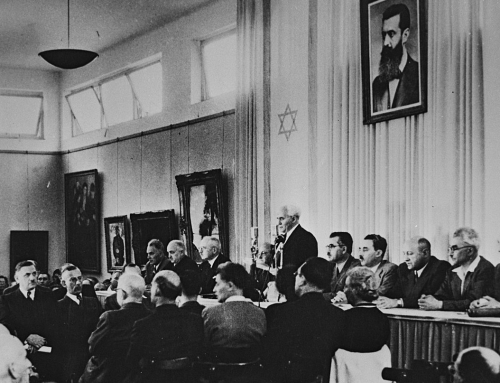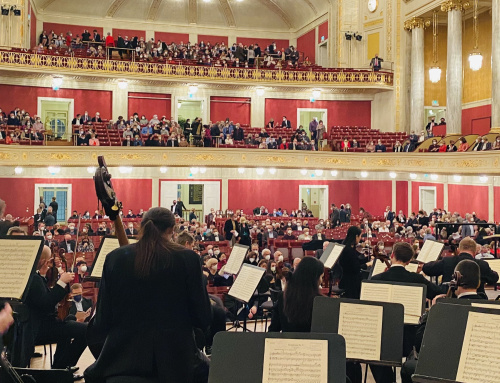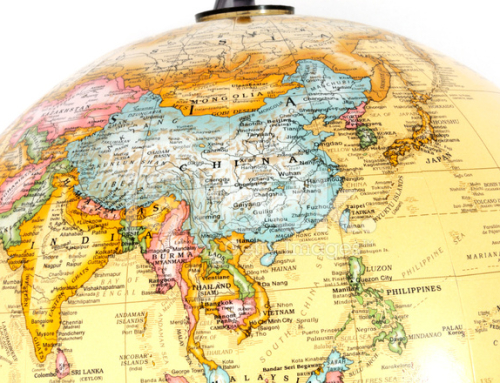State Treaty. The story of how Austria struggled for freedom with skill and luck over ten long years is incredibly exciting. A historian’s life’s work.
By Günther Haller in “DIE WELT BIS GESTERN” (“The World until Yesterday”) (“Die Presse”, Saturday, 15 May 2021)
Translated into English from the original German
by Wolfgang Geissler.
A country has to be lucky too, very lucky. The conclusion of the Austrian State Treaty on 15 May 1955 was such a day of happiness. Because of what happened that year, an annus mirabilis was anything but natural. During the Cold War, it was rare for the Soviet Army to give up territory it had occupied. The parallel cases are insignificant: a withdrawal from a naval base in China, one from Finland, that’s it. The third case was the withdrawal from Austria, at the same time as the three other victorious occupying powers of World War II.
The events that gave Austria complete freedom have been the subject of research for 65 years. For a long time, it was unsatisfactory. The Moscow archives were closed. It was clear that this had been a central issue in Austrian foreign policy since 1945. The archival situation for the Americans and the British was less cumbersome. The Viennese historian Gerald Stourzh (he is now retired, his birthday coincidentally falls on 15 May) found access to these sources during his archival trips in the 1960s and 1970s and on the genesis of the treaty even as early as the 1940s.
The historian, born in 1929, therefore accompanied Austria’s path to the State Treaty himself. For the 20th anniversary in 1975, his presentation, which was still quite manageable in scope, appeared: A “Brief History of the Austrian State Treaty”. The publication, called “The Blue Book” because of its binding, became a standard
work, and the “Brief” in the title could already be left out in the 2nd edition. Now the springs were gushing.
Finally open: The Moscow Archives.
The book grew more voluminous with each edition. The giant leap forward was in the years 1985 to 1998. The Russian sources were abundant. Stourzh invited the Viennese professor of Russian history, Wolfgang Mueller, to help exploit the Moscow archives. The result of the co-operation is now the 6th edition of the State Treaty book. It is thicker than ever before (see bibliography) and has a new title: “The Struggle for the State Treaty”.
A clear indication that the question was: how to change the minds of the power centre in the Kremlin. It wasn’t easy, and it was actually a struggle. The international situation was highly unfavourable for a long time, so it lasted ten years. Now, for example, through the evaluation of the Stalin and Molotov estates, the open questions of the earlier editions could also be answered. All available Politburo resolutions on Austria and the KPÖ (Communist Party of Austria) correspondence with Moscow were evaluated.
Wolfgang Mueller sees the Kremlin’s stance as the “result of several, sometimes conflicting, goals”: From the start, the Soviets wanted Austria permanently separated from Germany and influence the country’s politics. That meant: promoting the spread of communism and preventing integration into the West. The occupation of Eastern Austria was also the legal basis and argumentative aid in the further occupation of Hungary and Romania. The stationing was linked to the presence in Austria through the armistice and peace treaties of 1947. And finally, there was a purely material interest: the maximum exploitation of the confiscated Austrian companies.
Above all, the connection with the stationing of troops in Yugoslavia, Hungary and Romania explains the iron determination of the Russians clinging to the status quo in Austria for several years. It was not until 1949 that the final sprint began, which was hard to beat in terms of drama. This year the three Western powers, which had been supporting Austria all along, agreed with Moscow on the green light to conclude a treaty. Suddenly the Soviets brought up new counter-arguments. Obviously, pretexts were being constructed. For example, Austria had not paid its “peas debts” (food deliveries from 1945).
At that time, Gromyko wrote to Stalin that one should not give in to the interests of the “Anglo-Americans” and make no concessions to Austria. In short: Moscow was definitely no longer interested in a quick deal. Concern in the West increased at the coup-like establishment of communist dictatorships in Eastern Europe. Uneasiness was also brewing in Austria: if the occupation lasts too long, the country’s soul could be destroyed, says Bruno Kreisky.
New files, presented for the first time in the latest edition of the book, also show that the KPÖ was toying with the plan of dividing Austria into a communist eastern and a democratic western state. That was too much even for the Soviets; it was foreseeable that such a Western Austria would fall to Germany. Stalin’s right-hand man, Andrei Zhdanov, gave the KPÖ a dressing down.
In 1954, after Stalin’s death, the climate was more relaxed. Now Austria’s voluntary neutrality came into play. Once again, Moscow became stubborn when Germany prepared to join NATO. Was that also to be expected in the case of a free Austria?
The Austrian companies confiscated by the Soviets had already been run into the ground by 1955, and now they wanted to sell them lucratively. According to the latest files, the USSR did indeed succeed: Austria paid 150% of what was expected in Moscow. The comment from the Minister of Commerce Anastas Mikojan to Julius Raab: “My compliments, Mr. Chancellor, you are very good at negotiating!” is therefore not free of irony.
A “window of opportunity.”
In May 1955, Moscow saw its goals largely achieved. The Warsaw Pact fixed Soviet control over Eastern Europe, Austria was ready to be neutral, and that could also be used in propaganda against other countries. The separation from Germany was assured, as was Austria’s non-alignment. Austria used this window of opportunity, which could close again at any time. The suppression of the Hungarian uprising in 1956 showed the free
neighbour how quickly this could happen.
Despite the many works of the historian Stourzh, it must be said: it is rare for an author and a subject to be so inextricably linked. The State Treaty, the end of the East-West occupation and Neutrality are the central triad of his work. The recently deceased Hugo Portisch enjoyed 12 years of co-operation with Stourzh. Portisch agrees that the standard work on the State Treaty is not only still but more than ever exciting to read, just like a detective novel. According to Portisch, it is almost impossible to put it down once you started reading it.
Gerald Stourzh, Wolfgang Mueller
“Der Kampf um den Staatsvertrag 1945 –1955” Böhlau Verlag, 844 pages, €67
“Austria is Free!”
On that Sunday, 15 May 1955, Wolfgang Geissler, 11 years old, together with his parents, was amongst the thousands of Austrians in front of Belvedere Palace, witnessing this historic event.






